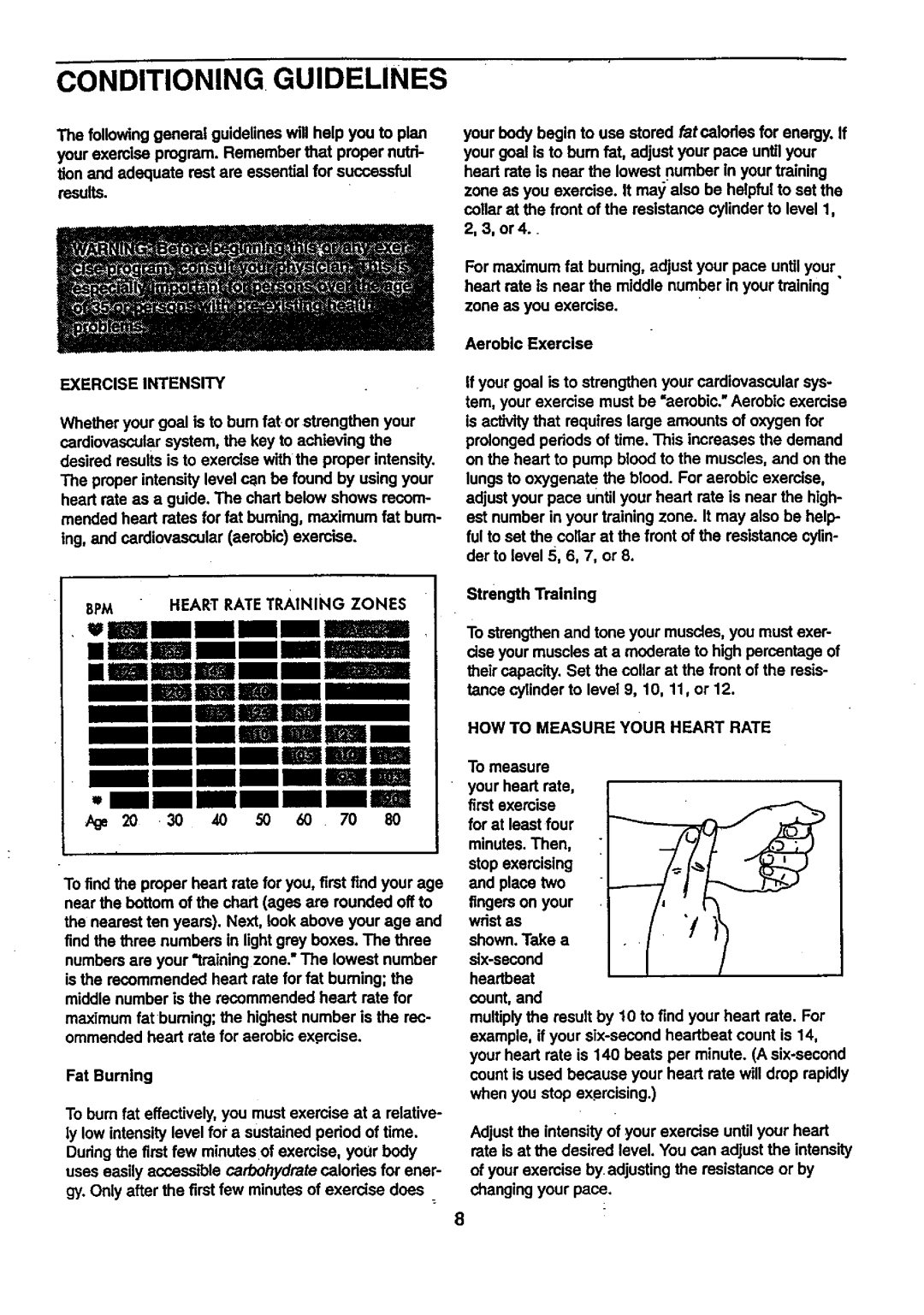
CONDITIONING GUIDELINES
The following general guidelines will help you to plan your exemise program. Remember that proper nutri- tion and adequate rest are essential for successful results.
n, inll II II ,lU III III..............
your body begin to use stored fat calodes for energy. If your goal is to bum fat, adjust your pace until your heart rate is near the lowest number in your training zone as you exercise. It ma_;also be helpful to set the collar at the front of the resistance cylinder to level 1, 2, 3, or 4..
For maximum fat burning, adjust your pace until your, heart rate is near the middle number in your training zone as you exercise.
EXERCISE INTENSITY
Whether your goal is to bum fator strengthen your cardiovascular system, the key to achieving the desired results is to exercise with the proper intensity. The proper intensity level can be found by using your heart rate as a guide. The chart below shows recom- mended heart rates for fat bumlng, maximum fat bum- ing, and cardiovascular (aerobic) exercise.
BPM | HEART RATE TRAINING ZONES |
•.mmmmmnmmmm m mmmmmmmmmm mmmm mmmmmmm
,,mmmmmmm
To find the proper heart rate for you, first find your age near the bottom of the chart (ages are rounded off to the nearest ten years). Next, look above your age and find the three numbers in light grey boxes. The three numbers are your "training zone." The lowest number is the recommended heart rate for fat burning; the middle number is the recommended heart rate for
maximum fat burning; the highest number is the rec- ommended heart rate for aerobic exf_mise.
Fat Burning
To bum fat effectively, you must exercise at a relative- ly low intensity level fop a sustained pedod of time. During the first few minutes of exercise, your body uses easily accessible carbohydrate calodes for ener- gy. Only after the first few minutes of exercise does
Aerobic Exercise
If your goal is to strengthen your cardiovascular sys- tem, your exercise must be "aerobic." Aerobic exercise is activity that requires large amounts of oxygen for prolonged periods of time. This increases the demand on the heart to pump blood to the muscles, and on the lungs to oxygenate the blood. For aerobic exercise, adjust your pace until your heart rate is near the high- est number in your training zone. It may also be help- ful to set the collar at the front of the resistance cylin- der to level 5, 6, 7, or 8.
Strength Training
To strengthen and tone your muscles, you must exer- cise your muscles at a moderate to high percentage of their capacity. Set the collar at the front of the resis- tance cylinder to level 9, 10, 11, or 12.
HOW TO MEASURE YOUR HEART RATE
To measure your heart rate, first exercise for at least four minutes. Then, stop exercising and place two fingers on your wrist as shown, Take a
count, and
multiplythe result by 10 to find your heart rate. For example, if your
Adjust the intensity of your exercise until your heart rate is at the desired level. You can adjust the intensity of your exercise by.adjusting the resistance or by changing your pace.
8
